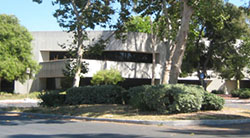UC REQUIREMENTS
To satisfy the UC subject requirements, students must complete 15 units of UC-approved high school coursework in the subjects listed below. (A unit is equal to an academic year, or two semesters, of study – which would be 130 credits in the Oak Park system.) These courses are also known as the “a-g” subjects or requirements. At least 7 of the 15 units must be taken in the last two years of high school. Students must earn “C” or higher grades in these courses in order to be certified as having fulfilled these subject requirements – this includes the 9th grade!
Required “a-g” Subjects:
a) History/Social Science – 2 years required
Two years of history/social science, including one year of world history,
cultures and geography; and one year of U.S. history or one-half year of U.S. history and one-half year of civics or American government.
b ) English – 4 years required
Four years of college-preparatory English that include frequent and regular writing, and reading of classic and modern literature. Not more than two semesters of ninth-grade English or no more than one year of ESL-type courses can be used to meet this requirement.
c) Mathematics – 3 years required, 4 years recommended
Three years of college-preparatory mathematics that include the topics covered in elementary and advanced algebra and two- and three-dimensional geometry. Approved integrated math courses may be used to fulfill part or all of this requirement, as may math courses taken in the seventh and eighth grades that your high school accepts as equivalent to its own math courses.
d) Laboratory Science – 2 years required, 3 years recommended
Two years of laboratory science providing fundamental knowledge in two of these three core disciplines: biology (which includes anatomy, physiology, marine biology, aquatic biology, etc.), chemistry and physics. The final two years of an approved three-year integrated science program may be used to fulfill this requirement. Not more than one year of ninth-grade laboratory science can be used to meet this requirement.
e) Language Other than English – 2 years required, 3 years recommended
Two years of the same language other than English. Courses should emphasize speaking and understanding, and include instruction in grammar, vocabulary, reading, composition and culture. Courses in a language other than English taken in the seventh and eighth grades may be used to fulfill part of this requirement if your high school accepts them as equivalent to its own courses.
f) Visual and Performing Arts (VPA) – 1 year required
Two semesters of approved arts courses from a single VPA discipline: dance, drama/theater, music or visual art. Students entering in the fall of 2006 or later must satisfy the VPA requirement by completing an appropriate single course in a year-long sequence (i.e., the second semester must be the continuation of the first semester). If scheduling challenges demand, students may divide the year-long course in two different academic years, as long as the course curriculum is designed as a year-long sequence and approved as such by the University.
g) College Preparatory Electives – 1 year required
One year (two semesters), in addition to those required in “a-f” above, chosen from the following areas: visual and performing arts (non-introductory level courses), history, social science, English, advanced mathematics, laboratory science and language other than English (a third year in the language used for the “e” requirement or two years of another language).
Alternative Options For Satisfying the “a-g” Requirements can be accessed at the following hyperlink: Alternative “a-g” options
UC & CSU ADMISSIONS
Effective with the class of 2003 the University of California and California State University systems agreed to adopt the same pattern of academic courses required for freshman eligibility, enabling high school students to take the same courses to prepare for admission to both institutions. Although in most instances, the CSU and UC have fully aligned their basic requirements for eligibility for admission, in some areas, CSU and UC will continue to have different admissions practices. This pattern of courses is known as the “a-g” Subject Requirements.
The (UC) University of California system has established a comprehensive web site for all application and admission information for the UC system. It also contains hotlinks to all UC campus websites, High School “a-g” lists as well as Junior College Transfer Agreements. You must disable your “pop-up” blocker to use the application feature. You can access it at the following link: http://admission.universityofcalifornia.edu/
UC Freshman Admission Requirements:
Complete 15 UC-required college-preparatory (“a-g”) courses, with 11 of those done by the end of 11th grade
Maintain a GPA of 3.0 or better (weighted by honors/AP bonus points) in these courses
Take the ACT with Writing or SAT Reasoning Test. SAT Subject Tests are now be optional
Eligibility in the Local Context status is offered to student’s in the top 9 percent of their class (this does not guarantee admission to a specific campus).
The (CSU) California State University system has established a system wide homepage that provides hotlinks to all CSU campus homepages. School comparisons by region, SAT/ACT scores, major, and GPA are available. CSU applications are also be submitted through this site! You must disable your “pop-up” blocker to use the application feature. It can be accessed at: http://www.csumentor.edu/
The UC/CSU “a-g” Subject Requirements: The academic requirements for both systems are: four years of English, three years of mathematics, two years of history/social science, two years of laboratory science, two years of a language other than English, one year of visual and performing arts and one year of college preparatory electives. These are known as the “a-g” subject requirements. To view the Oak Park courses that have been “a-g” approved click on the following hyperlink: “a-g” Subject List
Honors points: Both the UC & CSU will award honors points in calculating the GPA for up to eight semesters of UC-approved honors-level courses, IB Higher Level and AP courses taken in 11th and 12th grades, including up to two UC-approved honors courses, IB Higher Level and AP courses completed in the 10th grade.
Laboratory science: Students seeking admission to both the UC & CSU as a first-time freshman will be required to satisfactorily complete two laboratory science college preparatory courses. They will require that the two years of lab science include at least one biological science and at least one physical science from the UC list of approved lab science courses. One course must be selected from area “d” (laboratory science), and the second course must be selected from area “d” or area “g” (lab science elective).
Mathematics: The UC & CSU high school requirement in mathematics (algebra, geometry and advanced/second year algebra) may be validated with higher-level college preparatory mathematics courses with “C” grades or better in such courses as trigonometry, analytic geometry and calculus. In addition, advanced/second year algebra can validate first year algebra.
Multiple sittings of SAT and ACT: The CSU will continue to use the highest partial score(s) from multiple sittings of the ACT or SAT. Continuation of current CSU practice will be different from UC practice. The University of California uses the composite score from the SAT I or ACT, although it uses the highest composite score when multiple SAT I and ACT test results are presented.
Repeating Courses: UC & CSU policy states that courses in which a student has earned a D or F grade cannot be used to satisfy the Subject Requirement. If a student has earned a D or F grade in a required subject, the deficiency may be satisfied in one of three ways: (1) by repetition, (2) by completion of advanced work (in specified subject areas only) or (3) by examination scores. If the exact course in which a D/F grade was originally earned is repeated and a grade of C or higher is earned, the original D/F grade will NOT be included in the GPA calculation and the new grade will be used. Additional policies related to repeating courses are listed below:
Courses used to satisfy the “a-g” requirements taken in the ninth grade or earlier in which D or F grades are earned are treated as subject omissions. As with all ninth-grade courses, the grades are not included in calculating the Scholarship Requirement GPA.
Courses used to satisfy the “a-g” requirements taken for the first time in the 10th-12th grades, in which D or F grades are earned, are treated as subject omissions and scholarship deficiencies. If the courses are not repeated, the D or F grades are used in calculating the Scholarship Requirement GPA.
D or F grades earned in courses that are taken beyond the minimum required to satisfy the “a-g” requirements are not used in calculating the Scholarship Requirement GPA.
Courses used to satisfy the “a-g” requirements may not be taken Pass/Fail or Credit/No Credit.
Courses used to satisfy the “a-g” requirements in which the student earns an Incomplete are treated as subject omissions.
If a student repeats a course used to satisfy the “a-g” requirements in which he or she originally earned a grade of C or higher, the repeated grade will not be used in calculating the Scholarship Requirement GPA.
For more on the UC policy on repeating classes click on the following hyperlink: Repeating Courses
Validation of “D” grades in foreign language and math: Both the UC & CSU require that applicants have a grade of “C” or better in each term of the required “a-g” courses except that a “D” grade may be validated with a higher grade in the second semester or the next higher level course in foreign languages and mathematics. Even though the course requirement has been validated, the “D” grade will still remain in the grade point calculation.
Validation of language other than English: Both the UC & CSU can validate the requirement for two years of language other than English with a first semester college level course in that language. The college course must show that the first semester of college study is equivalent to two years of high school study. Higher levels of either high school or college level language other than English courses can also validate lower levels of the same language courses.
THE JUNIOR/COMMUNITY COLLEGE OPTION
More and more students are enrolling in community colleges across the nation, even as media attention focuses mostly on selective four-year colleges. Why are students choosing community colleges, and should you consider a community college as a part of your college search?
The Economic Option
One reason for the growing popularity of community colleges is their relatively low tuition. Overall, the average cost of public community colleges is less than half the cost of public four-year colleges and about one-tenth the cost of private four-year colleges. As a result, students who spend two years at a community college and then transfer to a four-year college spend less money for the same bachelor’s degree as their classmates.
The Associate’s Degree Option
Of course, the two-year associate’s degree is a goal in itself for many community college students. Community colleges offer a wide variety of programs that train students to work in specialized fields, such as dental hygiene, computer technology, nursing, and culinary arts. “The push for everyone to go to a four-year college ignores the fact that not everyone is suited by talent or interest to spending four years studying many of the same subjects they hated in high school,” says Shapiro. “In two years, students can get training for a fulfilling and well-paying career.”
The Transfer Option
For students who want the four-year degree, community colleges work with four-year colleges to make sure that students can make a smooth transfer. Most community colleges maintain transfer or “articulation” agreements with a number of four-year colleges. These agreements map out exactly which community college courses will transfer to a specific four-year college. They may even guarantee admission as a junior to students who fulfill certain course work and grade requirements. Many students use their two years at community college to improve their chances of getting into a more selective four-year college. “Almost no colleges will look at your SATs or high school grades after you complete community college. Community college offers an opportunity to prepare for a bachelor’s degree program at a university you might have been unable to be accepted to out of high school,” notes Scott White, a counselor at Montclair High School (NJ). Instead, you will be measured by your performance at the community college. This is good news for students with less-than-stellar high school records.
The Flexible Option
Most community colleges cater to students of all ages and backgrounds. As a result, you’ll often find more options in class scheduling, including evening and weekend classes. Distance learning is also one of the strengths of community colleges, with a variety of courses offered online, by correspondence or by other alternative methods (such as televideo and online ).
The California Community College system: will admit any student who is a high school graduate
or is 18 years of age or older. Students who hold a California State High School Proficiency Certificate are also eligible for acceptance to a community college. It is recommended that students planning to attend a community college still follow the course requirements for Oak Park High School graduation and include as many UC and CSU entrance requirements as possible. Every College Preparatory course passed in High School is one less course students will need to take at College. All California Community Colleges administer Math and English assessments to determine the appropriate level for new students to begin their college coursework. Moorpark College uses “self-assessments” to help students determine what their appropriate Math & English placement should be.
Non-local Junior Colleges: By agreement, California Community Colleges do not recruit high school students outside of their geographic area, but they do welcome students from throughout the state at each of their campuses. If students are is interested in attending a non-local junior college, it will be necessary to contact the admissions office of that school to obtain applications and to schedule them for assessment, registration and orientation. Many of the websites below can be used to find information about junior colleges outside of the Ventura County area.
Transferring to 4-year Colleges and Universities: A community college student may transfer to the University of California with junior standing if he/she completes the (IGETC) pattern of approved transferable courses, with a grade point average of at least 2.4. Of course, some UC campuses are more competitive than others to transfer to.
For detailed information about transferring to a school within the UC system go to the following site: http://www.universityofcalifornia.edu/admissions/transfer/index.html
For detailed information about transferring to a school within the CSU system go to the following site: www.csumentor.edu/planning/transfer/




